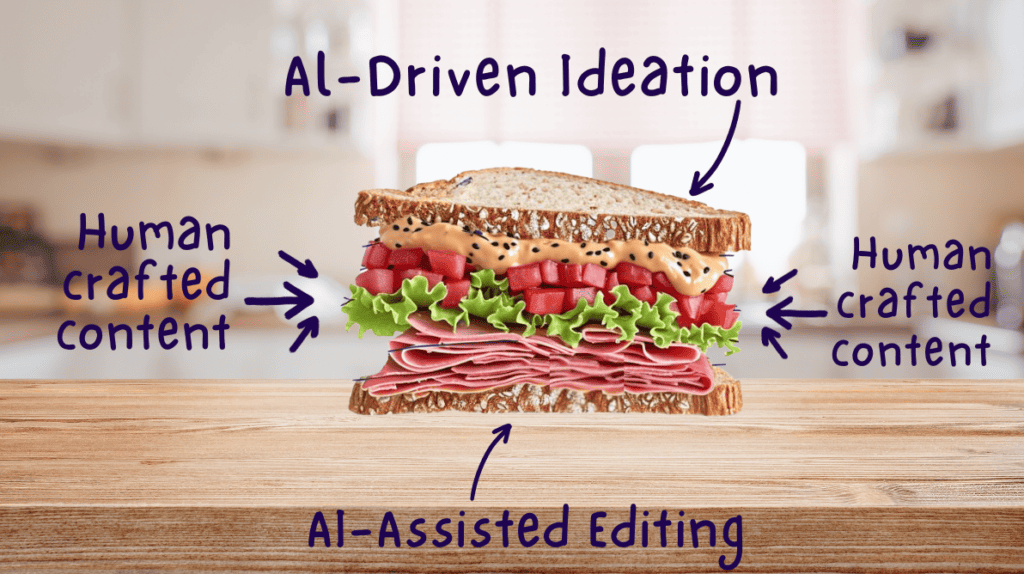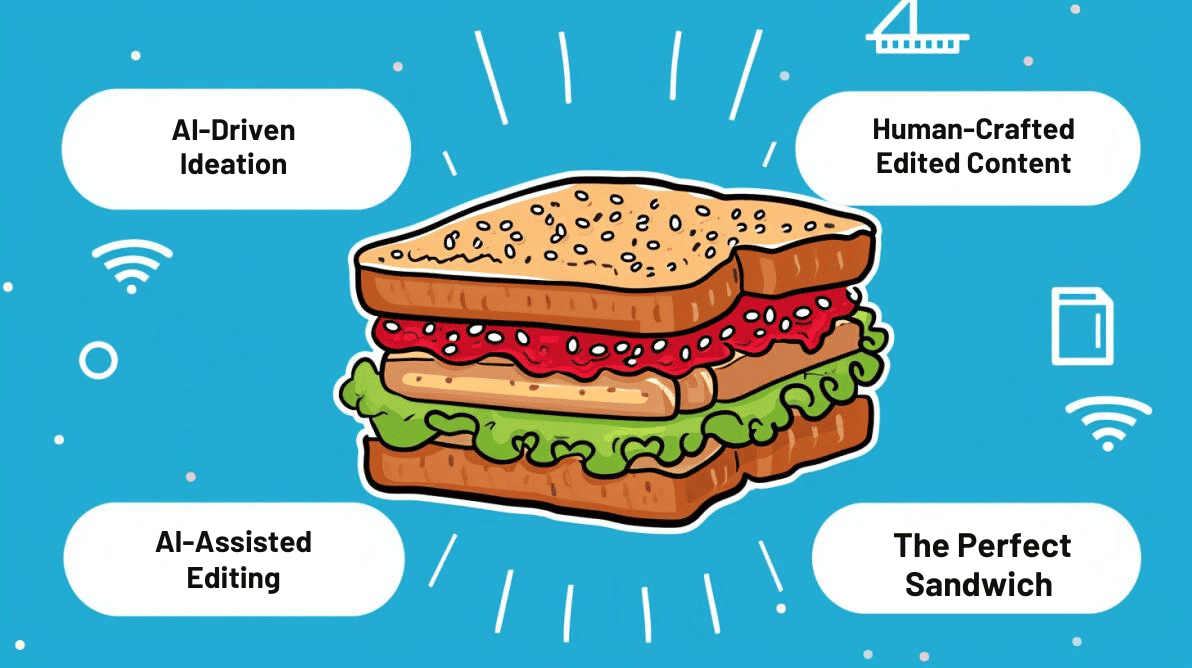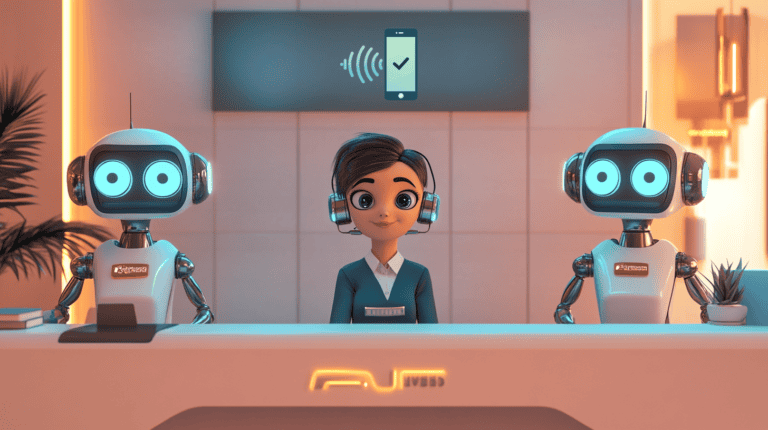The ‘AI Sandwich’ in Content Creation
Introduction – Fixing the Perfect AI sandwich.
In the realm of content creation, a revolutionary approach is reshaping how we think about the interplay between artificial intelligence and human creativity. Dubbed the ‘AI Sandwich’, this method leverages AI for the initial ideation and final editing phases, while the core content – the ‘meat’ of the sandwich – is richly crafted by the human author. This article delves into how this synergistic approach can lead to a more fulfilling and effective content creation process.
The First Slice of Bread – AI-Driven Ideation
The initial stage of content creation or making your AI sandwich, whether for an article, a story, or a YouTube video, begins with a burst of inspiration, and this is where AI proves invaluable. AI’s capability to analyze vast amounts of data and identify emerging patterns can be a goldmine for content creators looking for fresh, relevant topics.
For articles and blogs, AI can suggest themes based on current news, social media trends, or even academic research, ensuring that the content is timely and resonant. When it comes to storytelling, AI can offer unique plot twists, character traits, or settings, drawing from a diverse range of literary sources and genres. This can be particularly useful for writers seeking to break out of creative ruts or looking to explore new genres.
In the realm of video content, such as YouTube, AI’s role expands further. It can analyze viewer preferences, trending topics, and even successful video formats to suggest content ideas that are more likely to engage audiences. For instance, AI might identify a rising interest in DIY home improvement projects or a surge in outdoor adventure vlogs, guiding creators to tap into these trends.
Moreover, AI can assist in cross-platform content ideation. For example, it can suggest how a popular blog topic can be transformed into an engaging video script or a podcast episode, helping creators maximize their reach across different media.
In all these scenarios, AI serves as a dynamic, data-driven starting point. It provides a broad canvas filled with possibilities, but it’s the human creator’s task to select, refine, and transform these AI-generated ideas into compelling, authentic content that resonates with their audience.

The Meat – The Indispensable Human Touch in Content Creation
At the core of every memorable piece of content lies the unmistakable imprint of human creativity, experience, and emotional intelligence. This central layer of the ‘AI Sandwich’ is where the true essence of compelling content is formed, transcending the capabilities of any AI.
Human creativity is the wellspring of originality and innovation in content creation. It’s the ability to connect seemingly unrelated ideas, to think laterally and come up with solutions and narratives that no algorithm can predict. For instance, a writer might draw on a personal anecdote to illustrate a complex concept, making it more relatable and engaging for the reader. In storytelling, it’s the human imagination that weaves narratives that touch hearts, spark imaginations, and stay with the audience long after they’ve finished reading or watching.
Experience, both professional and personal, is another cornerstone of valuable content. It brings depth and authenticity that can’t be replicated by AI. A seasoned marketer, for example, can infuse their content with insights gained from years of hands-on experience in the industry, offering real-world examples and practical advice that resonates with fellow professionals. Similarly, a travel vlogger’s personal experiences and reflections on different cultures add a layer of authenticity and engagement to their content that pre-programmed data cannot achieve.
Emotional intelligence is perhaps the most distinctly human element in content creation. It’s the ability to understand and connect with the audience on an emotional level, to evoke empathy, joy, or inspiration. This emotional connection is what turns good content into great content. It’s the skill of a writer who knows how to craft narratives that speak directly to the reader’s fears, hopes, and dreams, or a speaker who can adjust their tone and message to resonate with their audience’s current mood and needs. Studies have shown that authentic human creativity may, in the future, be valued more, with a premium placed on human-made content.
In the realm of persuasive content, such as advertising or opinion pieces, the human ability to understand and appeal to a range of emotions is crucial. It’s about crafting messages that not only inform but also inspire action, whether it’s to buy a product, change a habit, or support a cause.
Moreover, human content creators are adept at navigating cultural nuances and ethical considerations, ensuring that content is not only effective but also respectful and inclusive. This sensitivity to the diverse tapestry of human experience is something AI has yet to fully grasp.
In conclusion, while AI can provide a starting point and polish the final product, it’s the human touch – with its creativity, experience, and emotional intelligence – that truly breathes life into content. It’s this human element that ensures the content is not just worth publishing, but also worth reading, watching, and sharing.
The Second Slice of Bread – AI-Assisted Editing and Refinement
Once the human author has infused the content with creativity, experience, and emotional intelligence, It’s time to wrap up the AI sandwich. AI re-enters the scene, acting as a sophisticated tool for editing and refinement. This phase is where AI’s analytical prowess complements human intuition, ensuring that the content is not only engaging and authentic but also polished and professional.
AI’s role in editing extends beyond basic grammar and spelling checks. It encompasses advanced linguistic analysis, ensuring clarity, coherence, and stylistic consistency. For instance, AI can suggest variations in sentence structure to enhance readability, or identify overused phrases, prompting the author to introduce more diverse language. This level of linguistic refinement is invaluable, especially in long-form content where maintaining consistency and engagement can be challenging.
In addition to linguistic enhancements, AI plays a crucial role in optimizing content for search engines. By analyzing keywords, search trends, and competitor content, AI can guide authors on how to tweak their content to improve SEO rankings. This ensures that the content reaches its intended audience, increasing visibility and impact.
AI also assists in tailoring content to specific audiences. By analyzing demographic data and user preferences, AI can suggest adjustments in tone, style, and even content structure to better resonate with different audience segments. For example, content intended for a younger audience might require a more casual tone and a dynamic structure, elements that AI can help identify and implement.
Another critical aspect of AI in this phase is data-driven personalization. AI can analyze user engagement patterns and suggest ways to personalize content, making it more relevant and appealing to individual users. This could mean adjusting the content based on geographic location, browsing history, or even user behavior on the site.
However, it’s essential to remember that AI is a tool to aid the human editor, not replace them. The final decision on whether to accept AI’s suggestions rests with the human author, who ensures that the content retains its original voice and purpose. This human oversight is crucial in maintaining the authenticity and emotional depth of the content, aspects that AI is yet to fully replicate.
In summary, the second slice of bread in the ‘AI Sandwich’ is about harnessing AI’s analytical and optimization capabilities to refine and elevate human-created content. It’s a collaborative process where AI’s efficiency and precision meet human creativity and insight, resulting in content that is not only well-crafted and audience-friendly but also deeply engaging and authentic.
Conclusion
The ‘AI Sandwich’ may be just a method, but it’s a reliable one. In this approach, AI is not a replacement but a partner that enhances the human touch. As we continue to explore the boundaries of AI in content creation, embracing this balanced approach could be the key to crafting content that is not only efficient and targeted but also deeply resonant and authentic.
What’s on your lunch menu today?






